- Created by CAE author, last modified on Feb 28, 2024
Available to User Managers or Admins
Entering Users, you land on the Groups & Users tab.
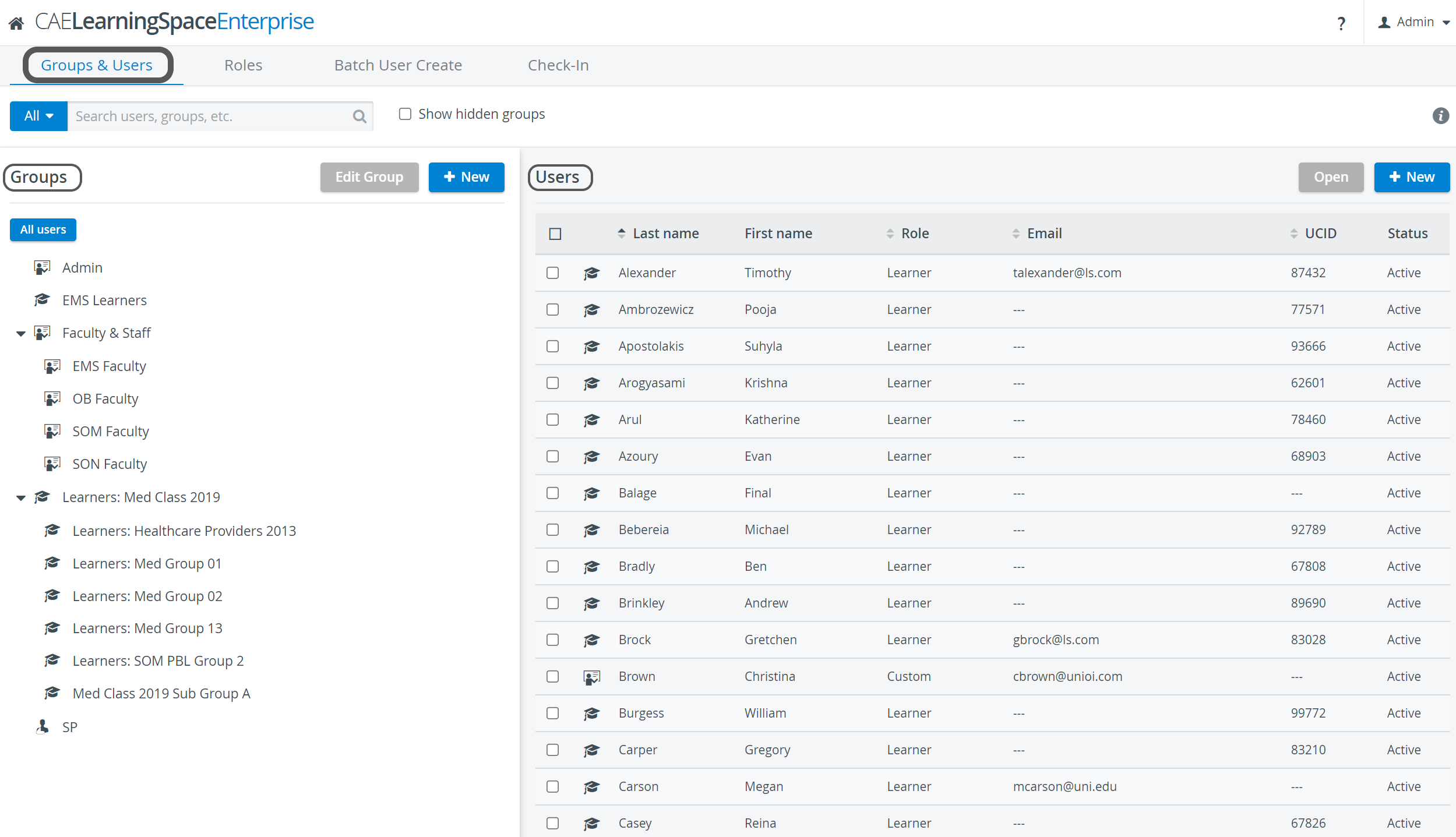
Groups and users are listed on the left and right side of the page, respectively.
This section explains:
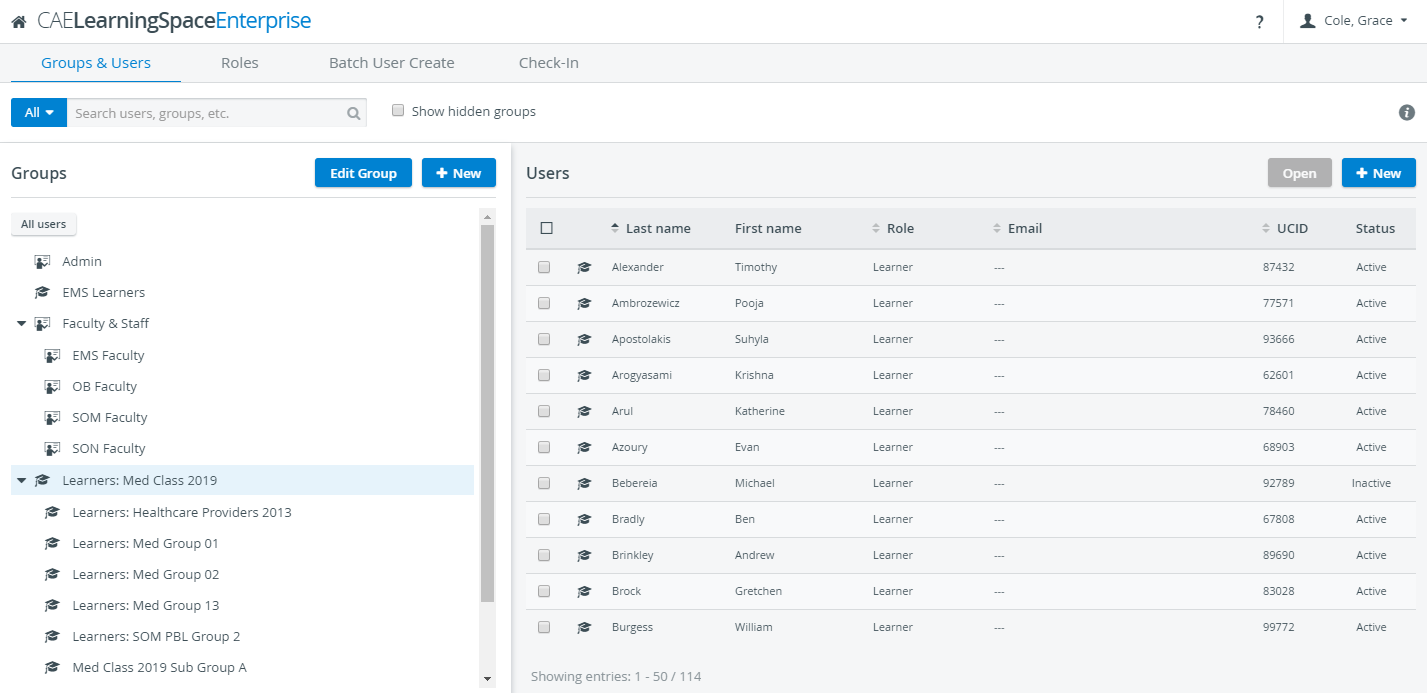
Pictograms
Tip:
The system distinguishes between different kinds of users and groups with the help of pictograms. Hover over the information tooltip (![]() ) on the right of the screen and see what each pictogram means.
) on the right of the screen and see what each pictogram means.
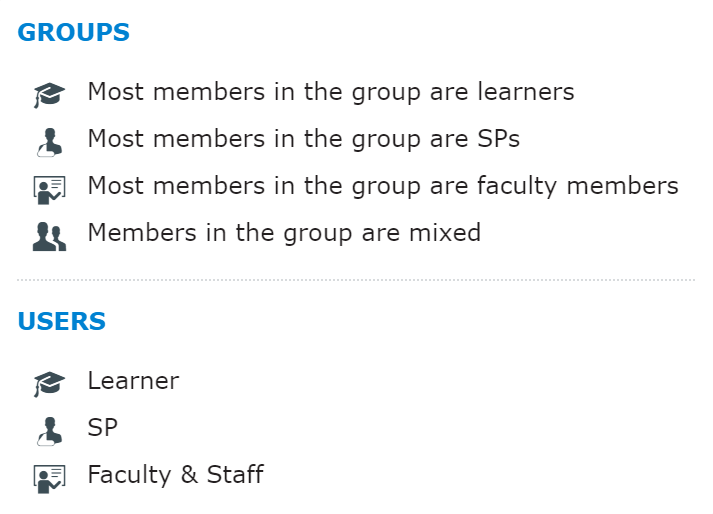

Smart Search Bar
With the smart search bar, you can search users by categories or other personal details.
Click the blue All drop-down to open the search menu where you can set conditions.
You can filter by type of users: Learner, Faculty, and SPs.
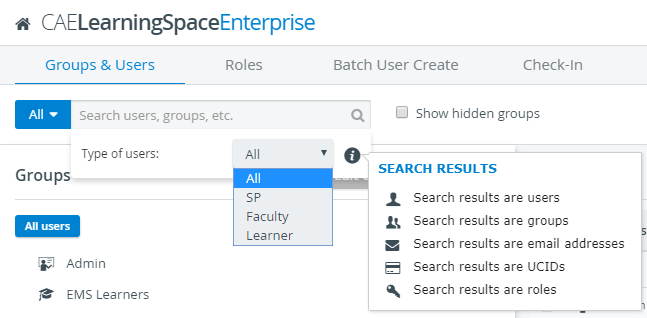
Here, pictograms help to identify the type of results the search bar lists when you enter a search term.
As the snippet illustrates, you can search by user name, group, email address, UCID and even roles.
There are additional search filters for SPs: you can select to search the SP's details, medical history, activity or custom fields if any added for the SPs.
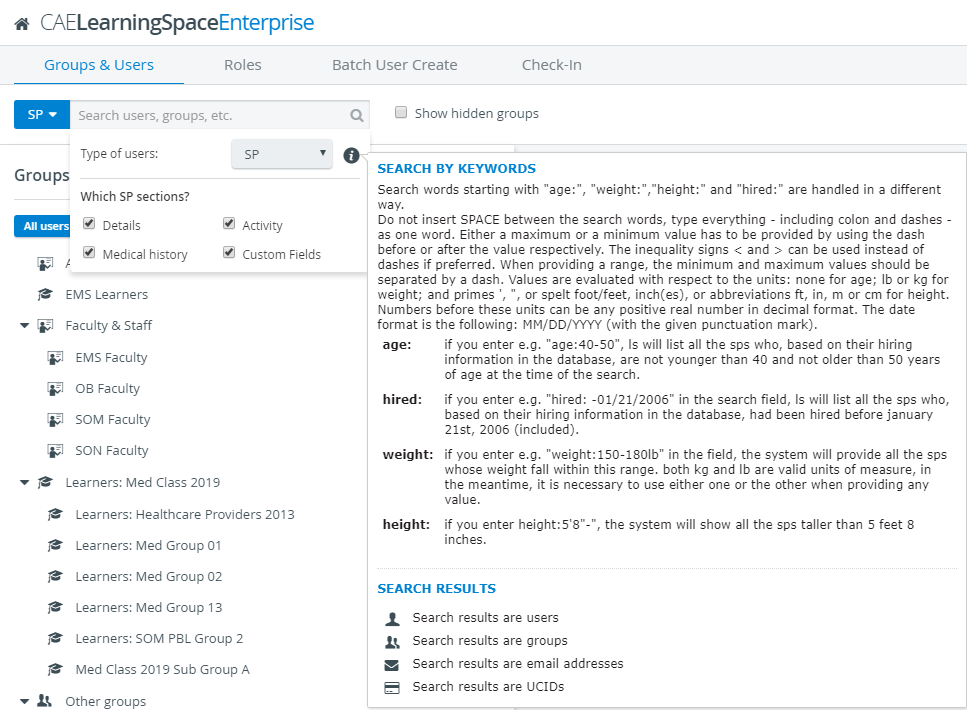
The All users button (located on the left under the smart search bar) will list every user registered in the system on the right, even those who are not added to any group yet.
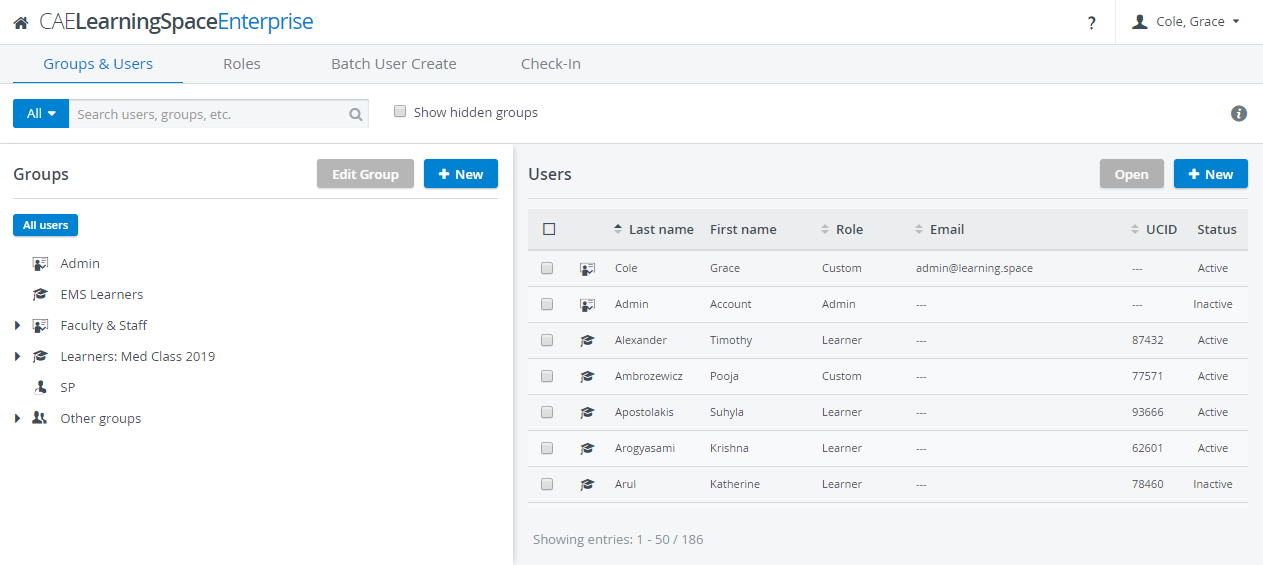
Hidden Groups
By ticking the 'Show hidden groups' checkbox, hidden groups will appear in the group menu on the left.
The visibility of a group can be set in the Edit Group pop-up window, in the header.

The info icon within the Edit Group pop-up lists all Activities the given group is assigned to as a Participant group (if to any).

Group Membership
Users can be added to one or more groups and be removed as well.
Find more information about managing group memberships following the links below.
Group membership can be managed in two ways:
- Create/ Edit Group pop-up - adding members to a new or existing group
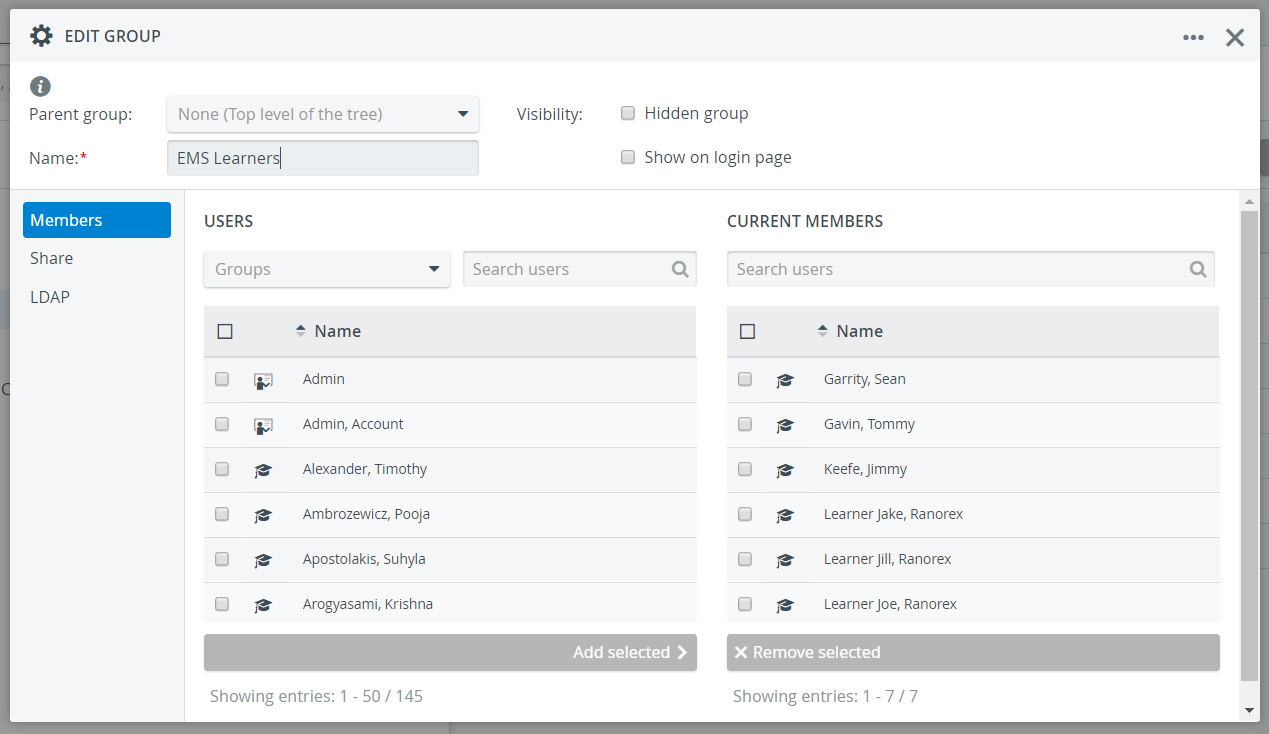
2. Create/ Edit User pop-up - selecting existing group(s) at Groups for a user

Subgroups
New user groups can be created within already existing larger groups. In such cases, the larger main group is the 'parent' group of the smaller 'child' or subgroup,
including all members of the main group and the subgroup - but not vice versa.
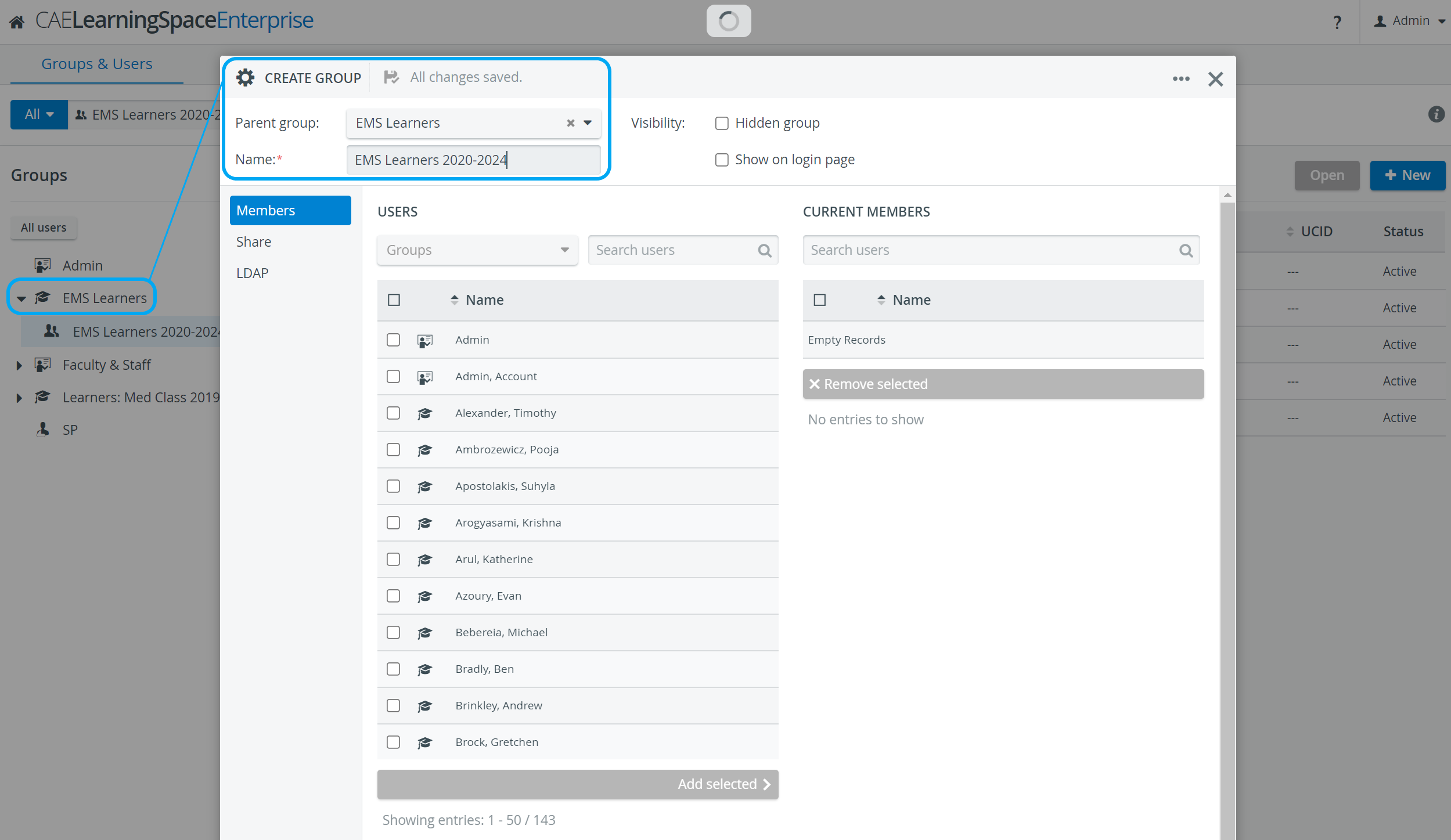
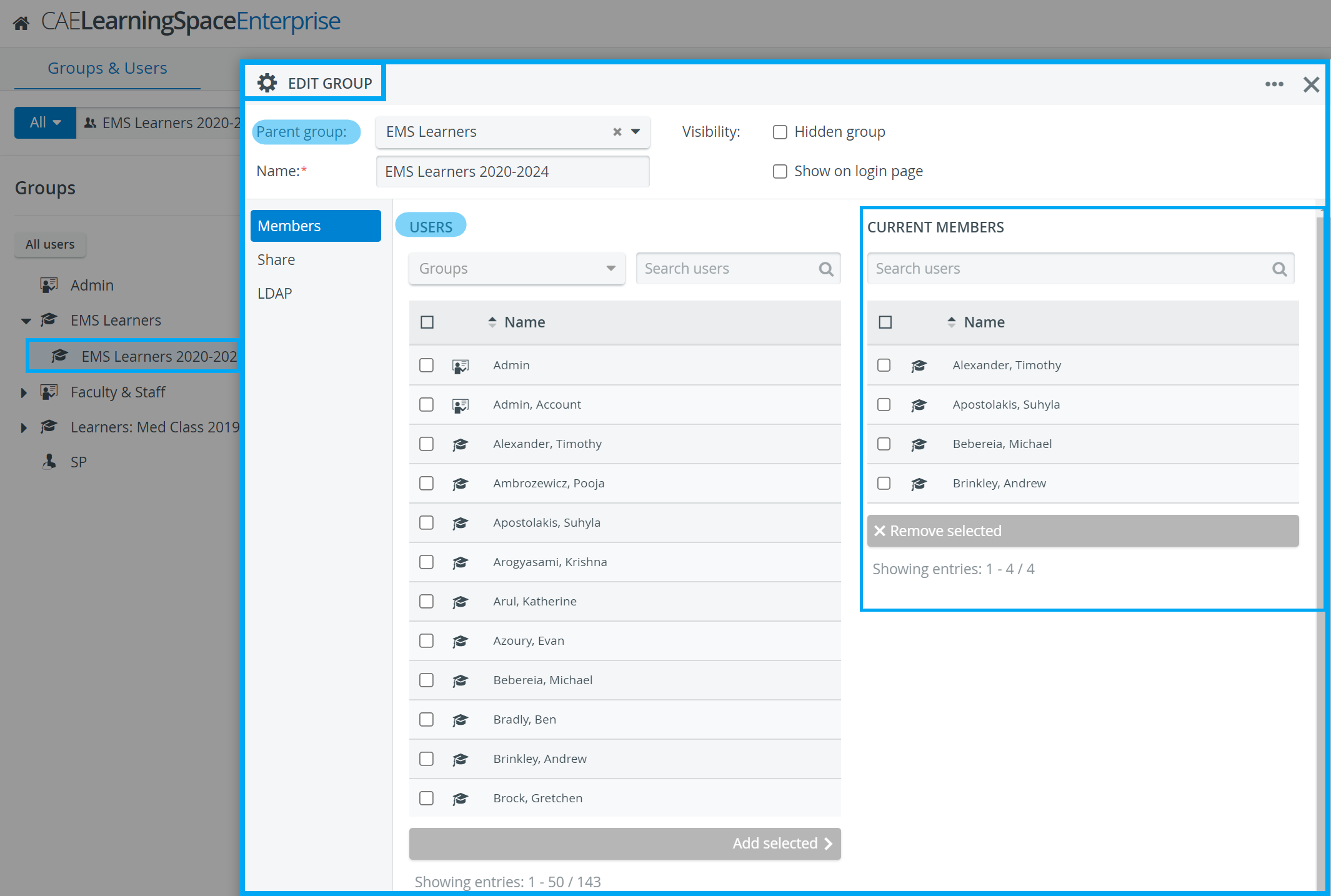
EXAMPLES:
User subgroups can be useful in case
- you wish to do differentiated examinations, where only students who achieved certain results should/should not participate
- a certain class of students (or any other type of LS users) needs to be 'archived' (i.e. hidden from the user interface) but their stored data should still be available in the system
- you wish to add only a subgroup of learners to an event (selected from the Participants dropdown of the Edit Event window)

These user subgroups are not equivalent to the evaluator/evaluee subgroups created on the Assignments tab of the Edit Activity window. (See How to Create Evaluator-Evaluee Subgroup Assignments)
The subgroups displayed on the Reports tab of the Edit Activity window are those set up on the Assignments tab: Faculty Evaluee subgroups are displayed under Learner access and Faculty Evaluator subgroups under Report reviewer access. (See more on How to Set Up Report Availability for Report Reviewers and How to Set Up Report Availability for Learners.)
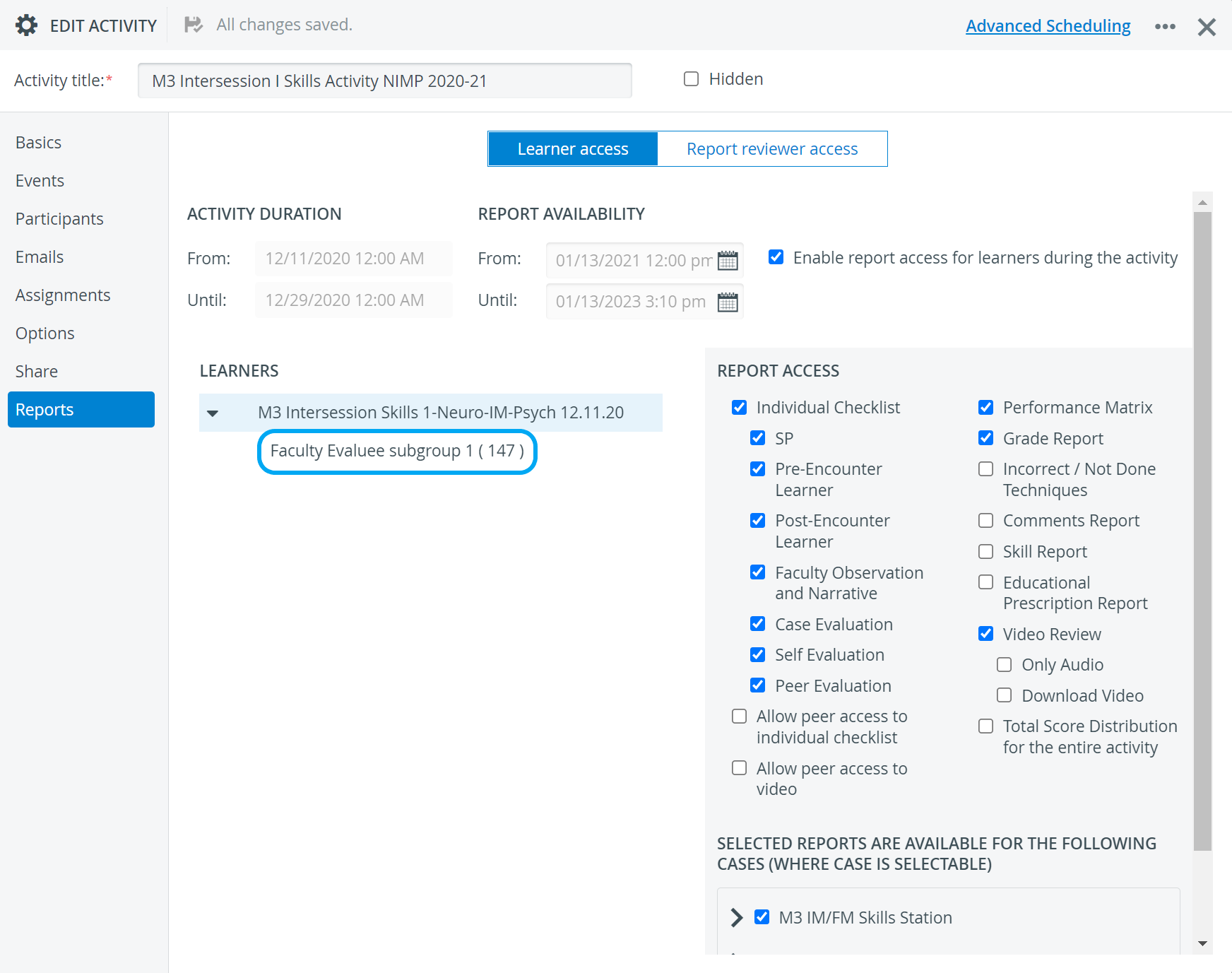
Related pages
-
Page:
-
Page:
-
Page:
-
Page:
-
Page:
-
Page:
-
Page:
Learn more on our User Manager - How to pages.